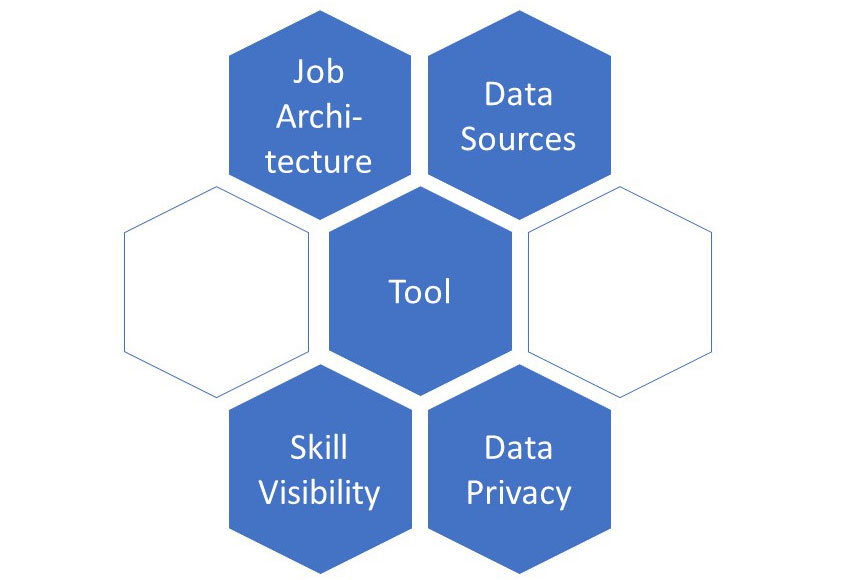Successful Strategic Workforce Planning – Challenges

Strategic workforce planning (SWP) is done to ensure that the workforce needs are in line with the organization´s needs in terms of capacity, skills, location, and costs. The ideal is to have the right number of people with the right skills at the right place at the most efficient cost.
However, under the current and continuously changing environment, workforce decisions need to be constantly optimized based on high-quality data. Today more than ever HR is generating a huge amount of data, but it is the ability to generate valuable insights from it that will be decisive. It will be key in attracting the right skills and competencies, effectively managing talent and ultimately being ready for the future.
What challenges are in the way of generating valuable insights from HR data?
- The job architecture data is messy. Organizations have no clear approach to managing job data leading to an unconsolidated job landscape with:
- Many different job titles describing similar roles creating confusion,
- Very granular job descriptions that fail to capture the real essence of a job,
- Job descriptions not being seen as living documents and therefore becoming obsolete,
- Job evaluation practices that are not aligned globally,
- No effective approach to capturing skills and competencies,
- Generally, no value-based approach to the job architecture.
- Fragmented landscape of data sources. Having the right tool for SWP is often still a work in progress for many companies:
- Some still struggle to build a core HR backbone from their complex legacy systems,
- Some have settled for error prone Excels,
- Others already have a solid HR core but are using many applications to manage the different HR processes such as talent acquisition, performance management, succession planning… and have failed to create an integrated infrastructure. This means that the data is not stored centrally and therefore not aggregated, leading to inconsistent strategic decisions and initiatives.
- No tool for visualizing and understanding the data. Once the job architecture and employee data is taken care of, there remains the challenge of visualizing the data to make sense of it to:
- Be able to compare values between groups e.g., employee engagement score by location to know where to adapt the employee experience design,
- Show relationships between variables e.g., between the employees’ level and turnover to invest in the right retention measures,
- Display evolutions and predictions e.g., completion of trainings by course over time to design learning paths and adapt offerings,
- Highlight data patterns across locations, organization, demography… e.g., to visualize potential technology impact on the workforce.
- Data privacy issues: How can you make sure that HR has access to the data it needs at the right time?
Governance and data privacy rules are often in the way of that. For each report required by HR, data needs to be reconciled and the relevant security rights need to be configurated consequently. This requires effort and time from IT and can often result in delays in receiving data and making it obsolete when obtained or even worse not having access to the needed data at all. - Capturing existing employee skills. Skill management is increasingly important in workforce planning, but the following questions remain challenging:
- How to split and classify skills in a way that accurately captures the essence of what people can do?
- Should competencies, attributes, interests also be considered? What other aspects?
- Which source to use to capture employee skills? From involving employees by asking them what skills they have, to using submitted documents (CV, degrees…) or integrating social media profiles, to asking project peers and managers. The use of machine learning is increasingly trendy in the field, for example to extract skills from text (e.g., feedbacks) or to suggest skills to employees, recommend projects or jobs.
- The issue is the quality of sources. How to ensure that skills mentioned are accurate?
- How to capture the evolution of skills (when employees gain a new skill for example)?
- How to plan for skills that will yet emerge?

